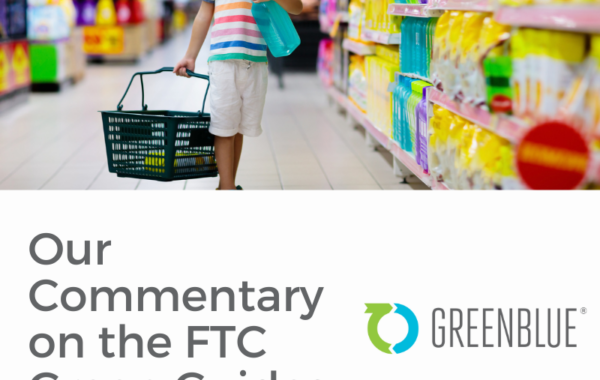August 20, 2016
Recycling and recycling terms can often be confusing. The difference between recycled content and recyclability is a question How2Recycle receives frequently from consumers. Simply put, recycled content is a package that contains recycled material, where as recyclability means the likelihood that the material we recycled will be properly sorted and converted into a new item.
Recycled Content
 If a package contains recycled content, it means it was made of recycled material. Recycled material can be derived from two sources: post-industrial or post-consumer. Post-consumer recycled material refers to everything we toss into the recycling bin, such as empty plastic bottles or aluminum cans. These materials are collected by local recycling programs and shipped to recycling facilities where they are sorted into bales based on material. The bales are then purchased and melted or ground into small pellets and molded into new bottles, cans, or tubs. Brands then purchase the new product and customize it with their company’s label so it can be purchased again.
If a package contains recycled content, it means it was made of recycled material. Recycled material can be derived from two sources: post-industrial or post-consumer. Post-consumer recycled material refers to everything we toss into the recycling bin, such as empty plastic bottles or aluminum cans. These materials are collected by local recycling programs and shipped to recycling facilities where they are sorted into bales based on material. The bales are then purchased and melted or ground into small pellets and molded into new bottles, cans, or tubs. Brands then purchase the new product and customize it with their company’s label so it can be purchased again.
Post-industrial material is an additional source of recycled content. Essentially, it is the waste generated from the original manufacturing process that is used again in the same material. For example, when making soda cans, a roll of aluminum is cut into round pieces that are then molded into their traditional shape. Scraps from the cutting process are then melted down, rolled again, and the process continues.
Both post-industrial and post-consumer recycling are valuable and play an important role in promoting sustainable practices. Using recycled content has many significant environmental advantages such as reducing energy consumption and extraction of finite resources. Further, in certain cases using recycled content can be advantageous from a cost perspective. With increasing frequency and volume, brands are publicly announcing specific goals for sourcing a certain percentage of their paper and/or plastic from recycled material. More often now than ever, consumers are seeing many of their favorite brands advertising products made with recycled content.
Learn more about designing packaging with recycled content in mind in our Design for Recycled Content Guide.
Recyclability
Recyclability is affected by a number of factors. The first consideration is the availability of recycling programs for a package: are the majority of people able to take this package to a drop-off recycling location or put the package in their curbside recycling bin? Another consideration is the technical recyclability—the likelihood that it will be properly sorted into the correct bale at a Material Recycling Facility (MRF) and whether it’s able to be reprocessed successfully.
It is important to keep in mind that simply because a product is derived from recycled materials does not automatically mean it is recyclable. Recycled content also does not guarantee improved overall environmental benefits. There are trade-offs with every decision. For example, recycled plastics tend to result in more water consumption and recycled fiber often results in greater greenhouse gas emissions. It is important to evaluate the costs and advantages of every decision and align them with your company’s sustainability goals and objectives to determine the most effective course of action. When it comes to understanding recyclability, How2Recycle works with manufacturers and brands to design for recyclability, promote transparency, advocate increased material recovery, and ease confusion about recycling at a national level.







